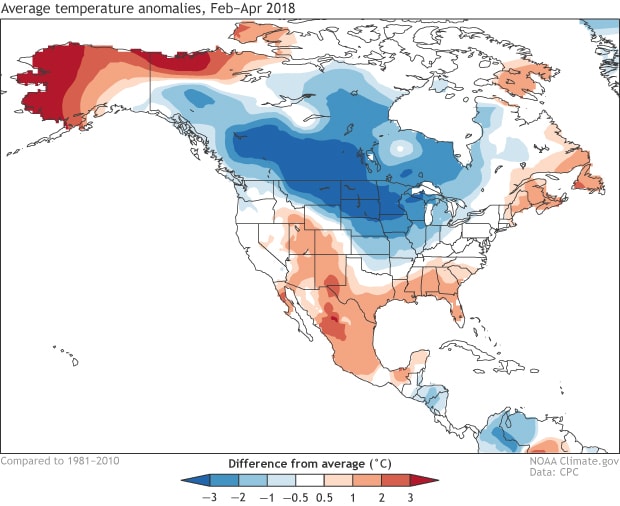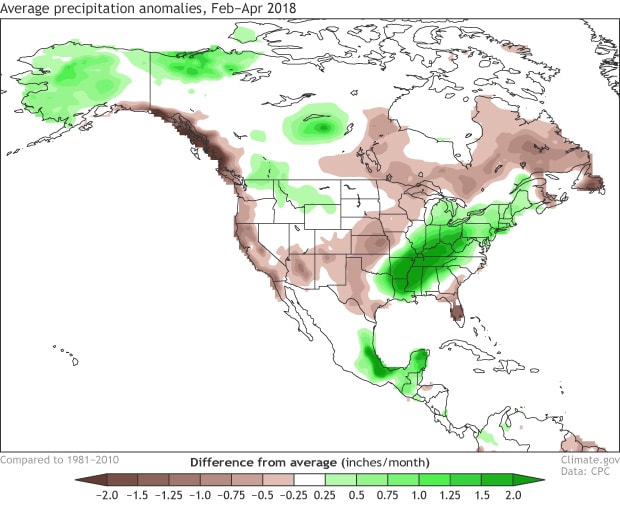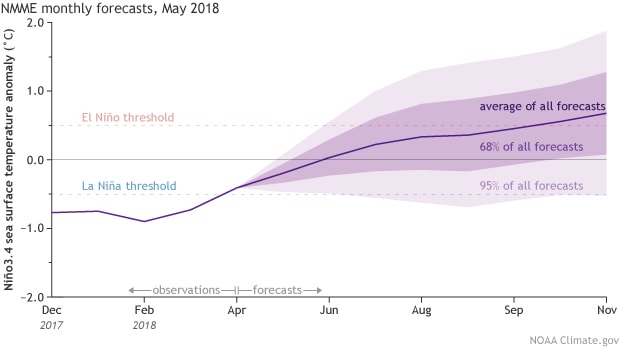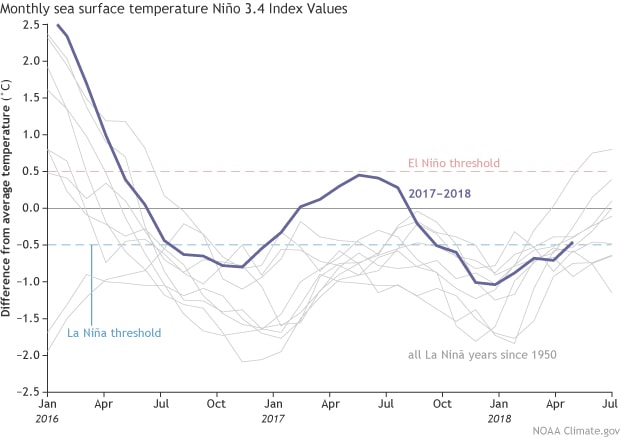May 2018 ENSO update: Thar she goes
It’s time to bid adieu to La Niña, as the sea surface temperature in the tropical Pacific returned to neutral conditions in April. That is, within 0.5°C of the long-term average.
The temperature of the water below the surface remained above-average, as the large area of warmer-than-average subsurface waters continued to move slowly to the east (a downwelling Kelvin wave). This warm area will continue to erode the remaining cooler surface waters over the next few months.
The tropical atmosphere is also looking mostly neutral. Rainfall over Indonesia was below average, and the near-surface winds were close to average, as La Niña’s strengthened Walker circulation faded.
Memories
Let’s look back over the past few months, to see how much February–April global temperature and rain patterns reflected those expected (temperature, rain) during La Niña! The maps linked here show both the changes expected during ENSO and the observed temperature trends and the combination of the two.
It’s important to remember that La Niña wasn’t the only game in town this year. Some of the other weather and climate patterns at play over the past few months included the Madden-Julian Oscillation, a sudden stratospheric warming, and, of course, global warming. As we’ve documented here at the ENSO Blog, these patterns have their own distinct effects on temperature and precipitation patterns, and attributing weather events to climate patterns is a complicated science.
That said, the 2018 late winter/early spring period over North America showed many similarities to what we’d expect during La Niña. In North America, February–April during La Niña tends to be cooler than average in the northern half of the US and through Canada and warmer than average through Texas and the South and into Mexico. When you add in the temperature trend during this time of year (slight cooling through the northern Midwest, warming across the Southwest), you get a pattern much like that observed during 2018.

What the future holds
Enough looking back! Let’s look forward! As we’ve discussed before, making ENSO forecasts in spring is especially complicated. It’s a time of transition, and small changes in conditions can have large effects down the road. This month’s ENSO forecast finds it most likely that neutral conditions will last through the summer and into early fall. Most of the climate models support this.

What about next winter?? The forecast possibility of El Niño nears 50% by the winter, as many of the computer models are trending to warmer tropical sea surface conditions in the later months of 2018. In the historical record (dating back to 1950) we’ve had 7 two-year La Niña events. These events have been followed by El Niño twice: 1972 and 2009. The probability of remaining in neutral conditions is about 40%, something that has happened three times in the record: 1956, 1985, and 2012. Less likely is a return to La Niña conditions—that scenario is given about a 10% chance. A three-peat La Niña isn’t impossible, at all, and has occurred twice in the historical record: 1973–76, and 1998–2001.
One thing we can be certain of is that forecasters are looking forward to next month when the models are increasingly getting past the spring predictability barrier and are more reliable. See you then!

